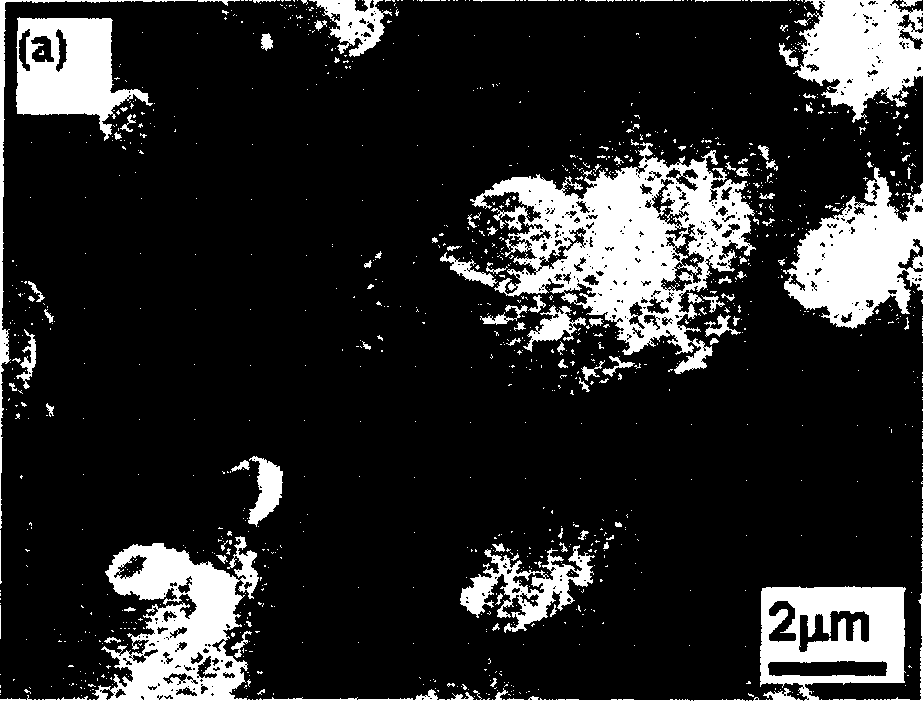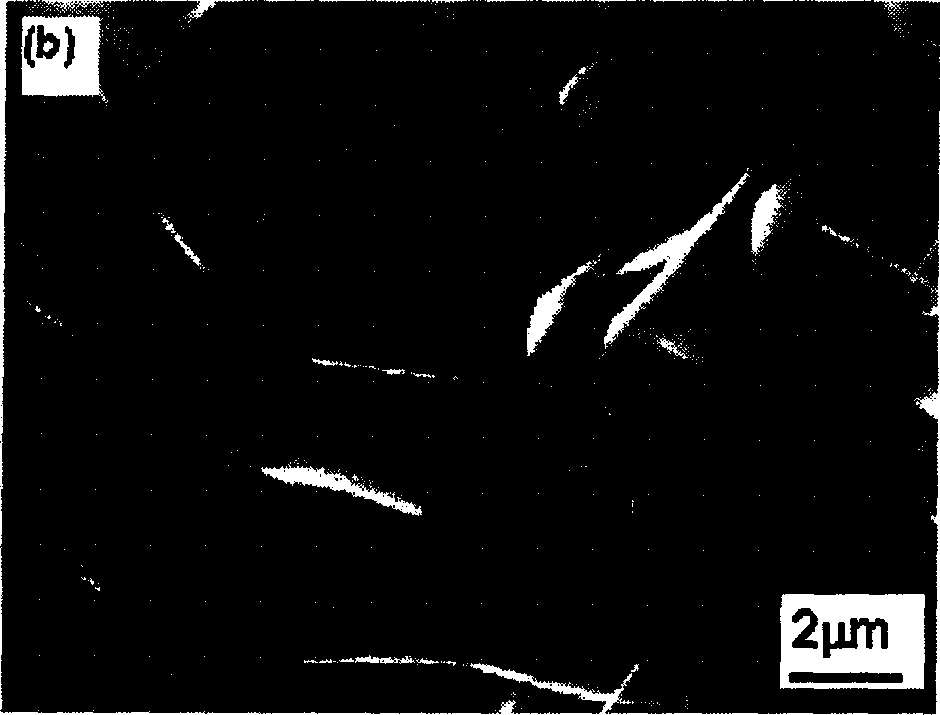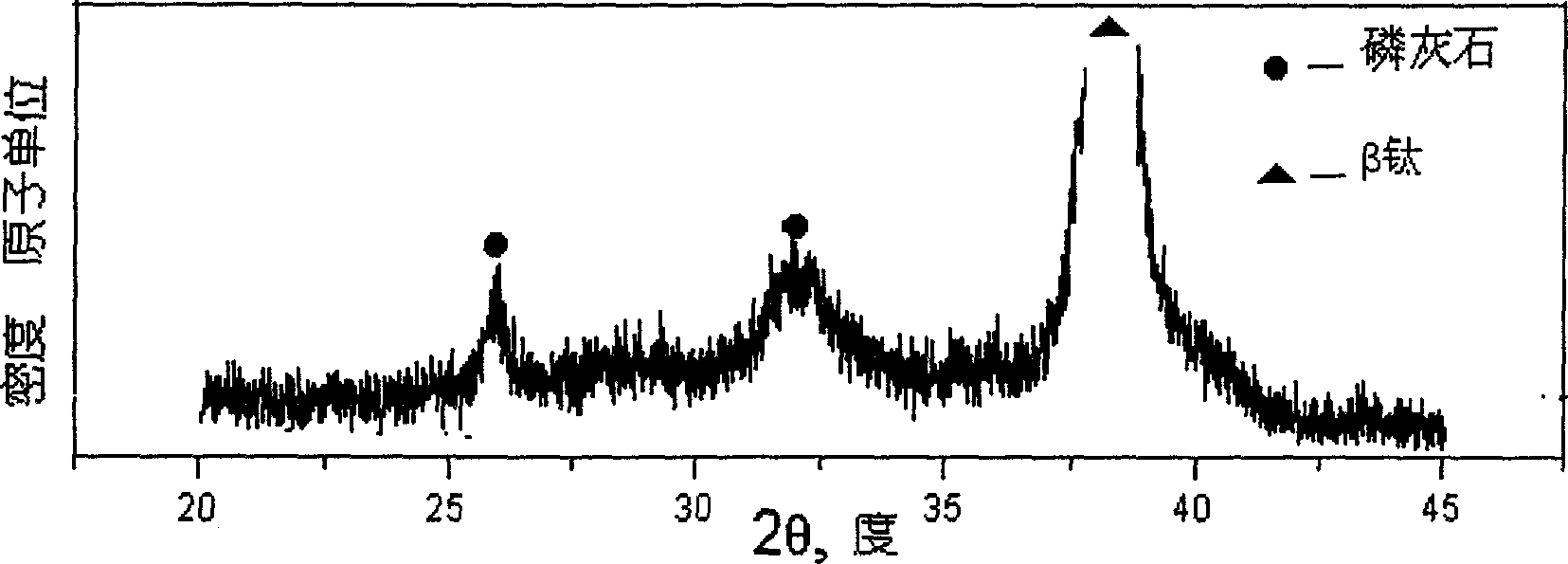Surface treatment for improving bioactivity and wear-resistant ability of titanium alloy surfaces
A bioactive, wear-resistant technology, applied in the coating and other directions, to achieve the effect of enhancing the bonding force, avoiding phase transition and embrittlement, and being easy to operate
- Summary
- Abstract
- Description
- Claims
- Application Information
AI Technical Summary
Problems solved by technology
Method used
Image
Examples
Embodiment 1
[0029] The Ti-29Nb-13Ta-4.6Zr sample was oxidized in air at 400°C for 24 hours, and then furnace cooled to room temperature. After this treatment, the surface hardness of the Ti-29Nb-13Ta-4.6Zr sample increased by about 300MPa (see Table 1), which is beneficial to the improvement of the alloy's wear resistance.
[0030] Soak the oxidized alloy in 10M NaOH solution at 60°C for 24 hours, and then dry it in air at 40°C for 24 hours.
[0031] The oxidized and alkali-treated Ti-29Nb-13Ta-4.6Zr samples were immersed in SBF and FCS solutions for 4 weeks to obtain spherical hydroxyapatite coatings (see figure 1 ), the X-ray diffraction pattern of the spherical hydroxyapatite coating is shown in image 3 .
Embodiment 2
[0033] The Ti-29Nb-13Ta-4.6Zr sample was oxidized in air at 400°C for 24 hours, and then furnace cooled to room temperature. After this treatment, the surface hardness of the Ti-29Nb-13Ta-4.6Zr sample increased by about 300MPa (see Table 1), which is beneficial to the improvement of the alloy's wear resistance.
[0034] Soak the oxidized alloy in 10M NaOH solution at 60°C for 24 hours, and then dry it in air at 40°C for 24 hours.
[0035] The oxidized and alkali-treated Ti-29Nb-13Ta-4.6Zr samples were immersed in SBF and FCS solutions for 4 weeks and 2 weeks, respectively, to obtain needle-shaped hydroxyapatite coatings (see figure 2), the X-ray diffraction pattern of needle-like hydroxyapatite coating is shown in Figure 4 .
[0036] Vickers Hardness (MPa)
PUM
| Property | Measurement | Unit |
|---|---|---|
| thickness | aaaaa | aaaaa |
| thickness | aaaaa | aaaaa |
Abstract
Description
Claims
Application Information
 Login to View More
Login to View More - R&D
- Intellectual Property
- Life Sciences
- Materials
- Tech Scout
- Unparalleled Data Quality
- Higher Quality Content
- 60% Fewer Hallucinations
Browse by: Latest US Patents, China's latest patents, Technical Efficacy Thesaurus, Application Domain, Technology Topic, Popular Technical Reports.
© 2025 PatSnap. All rights reserved.Legal|Privacy policy|Modern Slavery Act Transparency Statement|Sitemap|About US| Contact US: help@patsnap.com



